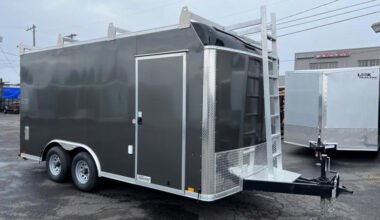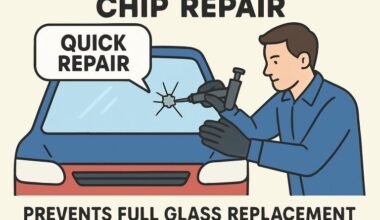When it comes to tires, not all are created equal, especially when comparing those on an aircraft to those on your car. Although they might appear similar at first glance, the differences between aircraft tires and car tires are significant and crucial for their respective functions.
Here are five differences between aircraft tires and car tires.
1. Design and Construction
The design and construction of aircraft tires differ significantly from car tires due to the unique challenges each must face. Aircraft tires are engineered to withstand the extreme forces of takeoff and landing, which require robust construction. Typically, aircraft tires are made with multiple layers of nylon or aramid fabric and are reinforced with steel belts to ensure they can endure the intense pressure and heat generated during these operations. In contrast, car tires are designed for durability and comfort over a variety of road conditions. They feature a combination of synthetic and natural rubbers, steel, and other materials that provide flexibility, traction, and longevity. While car tires need to handle different terrains, they don’t face the same level of stress as aircraft tires, allowing for a softer and more cushioned ride.
2. Load Capacity and Weight Distribution
Load capacity and weight distribution are crucial factors that differentiate aircraft tires from car tires. Aircraft tires are built to support the enormous weight of an aircraft, which can range from thousands to hundreds of thousands of pounds. This requires tires that can evenly distribute the load across the landing gear, ensuring stability and safety during takeoff, landing, and taxiing. Car tires, while still needing to support the vehicle’s weight, deal with much less mass compared to aircraft. The load capacity of car tires is influenced by factors such as passenger capacity, cargo weight, and vehicle dynamics. Car tires are optimized to distribute weight evenly across the tire’s surface, providing balance and control, especially during turns and sudden maneuvers.
3. Tread Patterns and Wear
The tread patterns and wear characteristics of aircraft and car tires are tailored to their specific operational environments. Aircraft tires have simple, smooth tread patterns designed to provide maximum traction on wet runways while minimizing the risk of hydroplaning. These treads are shallow and primarily serve to channel water away from the contact surface during high-speed operations. Car tires, however, feature more complex tread patterns that offer grip and handling across various road conditions, from dry asphalt to wet or snowy surfaces. The intricate designs, including sipes, grooves, and blocks, help maintain traction, reduce road noise, and enhance overall ride quality. The diverse tread patterns also contribute to the tire’s longevity by distributing wear evenly across the tire’s surface.
Wear characteristics between the two tire types also differ. Aircraft tires are designed for a limited number of takeoffs and landings, often requiring retreading or replacement after a set number of cycles. Car tires, in contrast, are built for extended use over many thousands of miles, with wear indicators to help determine when replacement is necessary. Regular maintenance and alignment checks can extend the life of car tires significantly.
4. Inflation and Deflation
Inflation and deflation are critical aspects of tire maintenance, and they vary significantly between aircraft and car tires. Aircraft tires require precise inflation pressures to operate safely and efficiently. These pressures are typically much higher than those of car tires and must be maintained within strict parameters. Car tires, on the other hand, operate at lower pressures, which contribute to a comfortable ride and optimal fuel efficiency. Proper inflation is vital for the safety and performance of car tires, as under-inflation can lead to increased wear, reduced fuel economy, and potential tire failure. Regular checks and adjustments are necessary to maintain the correct pressure and ensure the tires perform as intended.
Tire deflation processes differ significantly between automobiles and aircraft due to their distinct operational requirements and safety considerations. Car tires typically deflate gradually through natural air permeation or punctures, allowing drivers time to notice pressure loss through dashboard warnings or visual inspection, and can often be safely driven short distances to repair facilities. In contrast, airplane tires must withstand extreme conditions including rapid temperature changes, high-speed landings, and massive weight loads, requiring specialized deflation procedures that prioritize immediate safety and controlled decompression. Aircraft maintenance crews may use precise equipment like the Boxell 968RB tire deflation system, which ensures safe, controlled air release during maintenance operations, preventing dangerous rapid decompression that could injure personnel or damage surrounding equipment.
5. Maintenance
Maintenance and lifespan are critical considerations for both aircraft and car tires, with each requiring specific care to maximize safety and performance. Aircraft tires undergo rigorous maintenance schedules that include regular inspections, pressure checks, and retreading. Due to the high-stress environment in which they operate, aircraft tires have a relatively short lifespan compared to car tires and are often replaced after a set number of landings or flight cycles. Car tires, by contrast, can last for tens of thousands of miles with proper care. Regular maintenance tasks for car tires include rotation, alignment, balancing, and pressure checks. These practices help distribute wear evenly, improve fuel efficiency, and enhance overall vehicle handling. Car tires also come with tread wear indicators that signal when replacement is necessary, ensuring safety and performance are maintained.
Conclusion
The differences between aircraft tires and car tires are substantial and reflect the unique demands of air and road travel. Understanding these differences not only highlights the ingenuity behind tire engineering but also emphasizes the importance of proper maintenance in extending tire life and enhancing safety.






